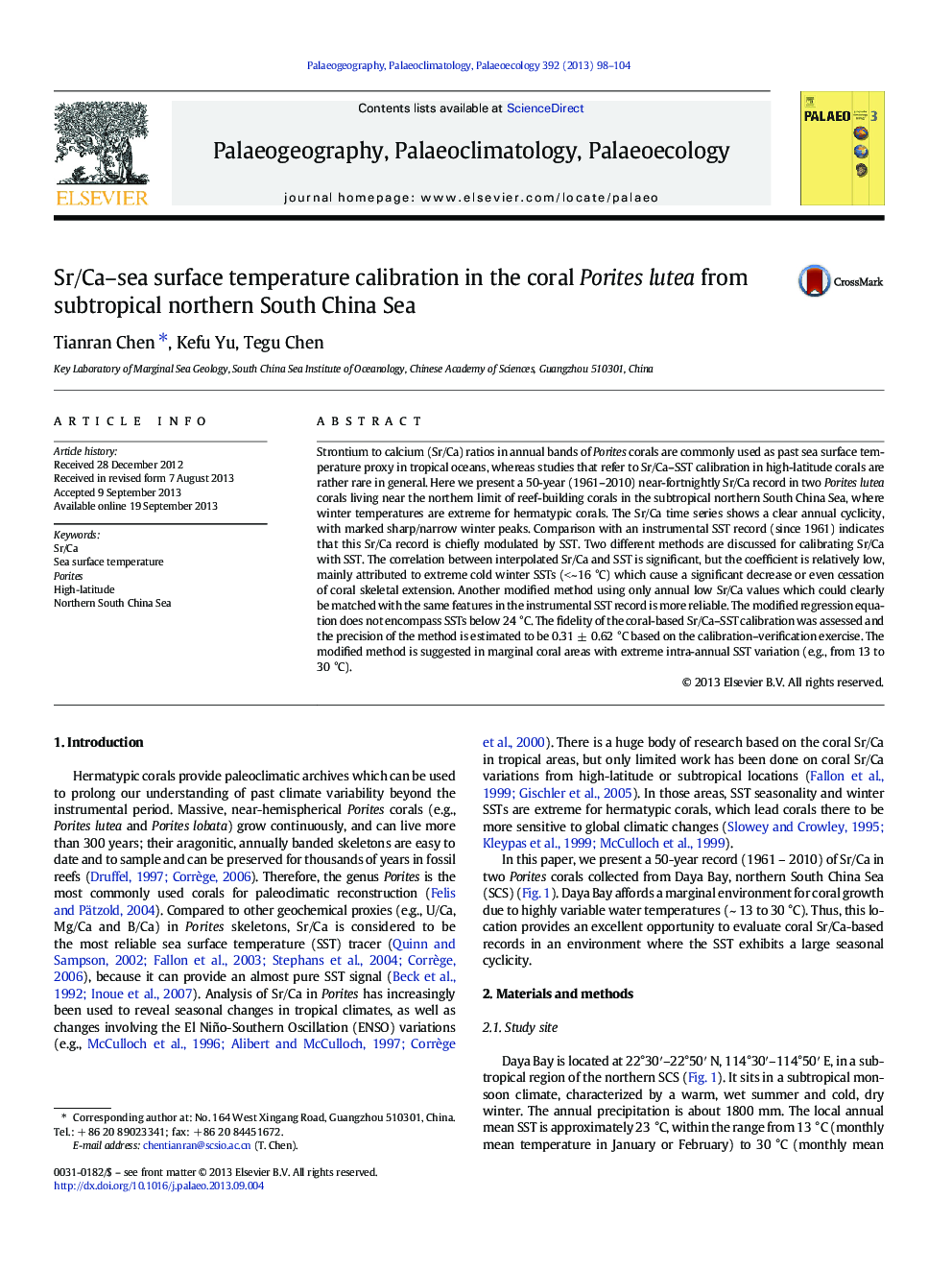| Article ID | Journal | Published Year | Pages | File Type |
|---|---|---|---|---|
| 4466431 | Palaeogeography, Palaeoclimatology, Palaeoecology | 2013 | 7 Pages |
•Sr/Ca–SST calibration is analyzed in high-latitude Porites corals.•The traditional calibration method is not suitable for high-latitude corals.•A modified method is suggested in this study for marginal coral areas.
Strontium to calcium (Sr/Ca) ratios in annual bands of Porites corals are commonly used as past sea surface temperature proxy in tropical oceans, whereas studies that refer to Sr/Ca–SST calibration in high-latitude corals are rather rare in general. Here we present a 50-year (1961–2010) near-fortnightly Sr/Ca record in two Porites lutea corals living near the northern limit of reef-building corals in the subtropical northern South China Sea, where winter temperatures are extreme for hermatypic corals. The Sr/Ca time series shows a clear annual cyclicity, with marked sharp/narrow winter peaks. Comparison with an instrumental SST record (since 1961) indicates that this Sr/Ca record is chiefly modulated by SST. Two different methods are discussed for calibrating Sr/Ca with SST. The correlation between interpolated Sr/Ca and SST is significant, but the coefficient is relatively low, mainly attributed to extreme cold winter SSTs (<~ 16 °C) which cause a significant decrease or even cessation of coral skeletal extension. Another modified method using only annual low Sr/Ca values which could clearly be matched with the same features in the instrumental SST record is more reliable. The modified regression equation does not encompass SSTs below 24 °C. The fidelity of the coral-based Sr/Ca–SST calibration was assessed and the precision of the method is estimated to be 0.31 ± 0.62 °C based on the calibration–verification exercise. The modified method is suggested in marginal coral areas with extreme intra-annual SST variation (e.g., from 13 to 30 °C).
